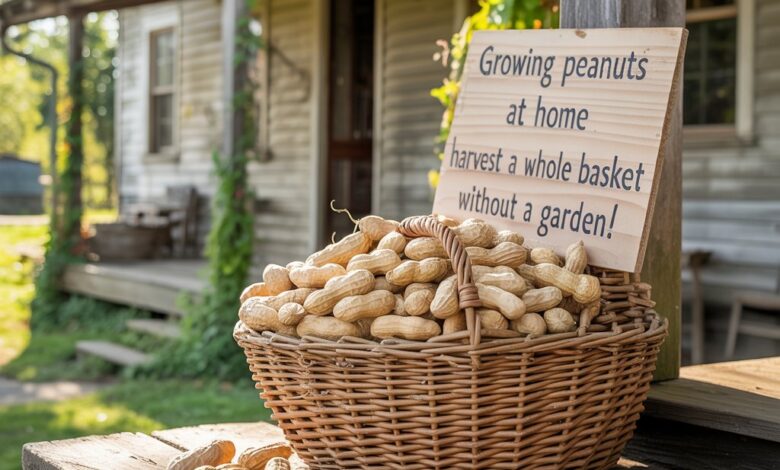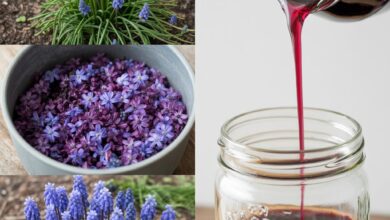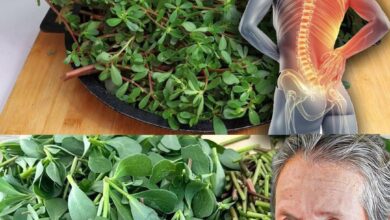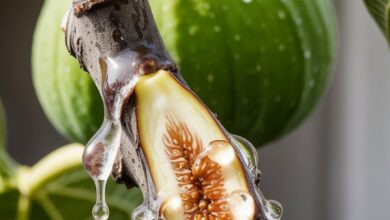How to Grow Peanuts from Store-Bought Nuts: The Ultimate Gardening Hack

While it may seem odd, growing your own peanuts is possible – even from raw peanuts that you purchase at a store. With a little thought and attention, you can take this simple snack and make the process of growing peanuts from a home garden project that you will enjoy and can be proud of. With space for a large backyard or just a sunny garden bed, here is what you need to know to grow peanuts from scratch.
Step One: Find the Right Peanuts
Not all peanuts you find at the store are appropriate for growing. You must have raw, unsalted, and unroasted peanuts, with the skins on. Roasted peanuts and salted peanuts will not sprout. Look for peanuts that are plump, fresh, and have not been inspected for safety or consumed by animals.

Step Two: Plan for Planting
Peanuts prefer long, warm growing season, usually requiring between 100 to 130 frost-free days. If you live in a cooler area of country or climate, you can start peanuts indoors about 5 to 8 weeks before the last frost, since they don’t germinate as quickly as other similar garden crops. This way you can offset any potential issues with a healthy plant.
Soil Suggestions:
Peanuts like loose, sandy, and drained soil.
To enhance drainage and drainage in soil, be sure to mix in some aged-composed with sand.
Keep soil light for lower strains on peanut pods forming underground.
Planting Directions:
Plan to sow peanuts 1 to 2 inches deep.
Space plants 24 to 36 inches apart in rows, allowing for at least 72 inches between adjacent rows so plants have room to spread. Step 3: Choose Your Planting Site
Peanut plants love sunshine so you will want to plant them in a location that receives full sunlight all day.
Other Considerations:
If you are in a cooler area and there is a risk of late spring frost, you may want to use row covers to protect your seedlings.
For best results, try to keep a pH on your soil between 5.5 and 7.0. This slight acidity helps plants use nutrients.

Step 4: Watering and Plant Care
Moisture is important while you are growing peanuts, but especially when your plants are flowering and podding.
Watering Precautions:
Plan on about 1 inch of water a week, but follow the rainfall and adjust accordingly.
Do not overwater; peanut plants do not like their roots wet; they will rot.
Mulching:
You will want to put mulch around your plants at about 6 inches tall. The mulch helps to retain moisture, reduce weeds, and just makes your plants look nicer.
Step 5: Fertilizer to Promote Pod Growth
Being legumes, peanuts put nitrogen back into the soil on their own; but, they need calcium during pod formation.
Fertilizer Information:
You will want to use a low nitrogen, or balanced fertilizer before planting.
Use gypsum or calcium carbonate for calcium, as it can help the shells grow strong.
Step 6: Pruning and Replanting
Peanut plants are pretty low maintenance and typically do not need to be pruned. If they get overgrown or leggy you can prune them a little for shape and better airflow.
For propagating peanuts:
When you are finished harvesting, save a few mature peanuts for next years. Make sure they are thoroughly dried and store them in a cool place until fall planting.

Step 7: Harvesting and Storing Peanuts
You will know your peanuts are ready to harvest when they begin to yellow and wilt. This is the end of their life cycle. Your peanuts will be ready to harvest in about 100 to 150 days after planting the seeds.
How to Harvest:
Loosen the soil, then pull the entire plant while carefully removing a peanut from the soil.
Shake the soil off the plant, then hang the plant upside down in a dry warm area to cure for about a week or two.
Storage:
After the curing process, remove the peanuts from the pods, and place in a mesh or paper bag to dry in a well ventilated area.
If you like salted and roasted nuts, you can spread your pods on a baking sheet and roast in an oven set to 350 degrees for 15-20 minutes.
Conclusion
Growing peanuts from purchased raw nuts is a fun and rewarding way to build a connection with your food. You do not need to have a large garden; you just need space with plenty of sunshine, a little time, and Gardenscape in your care. In return, you can expect to have joyous harvests with truly home-grown nuts from your soil to your snack bowl.
Go find a bag of raw peanuts, dig in, and start planting. Your peanut garden is only a season away!




